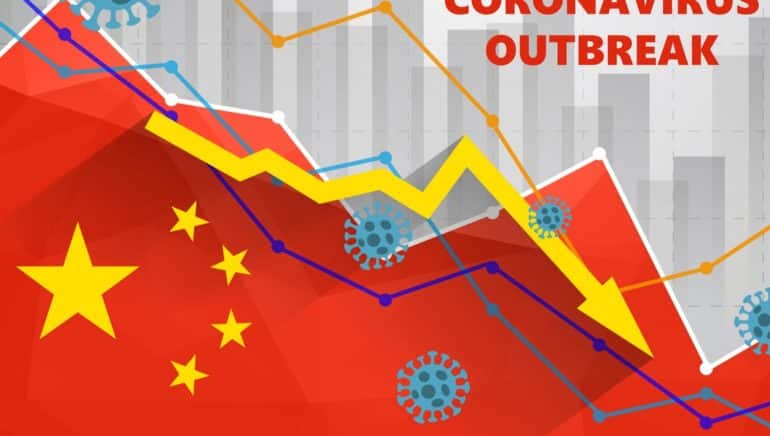As we are passing through the second month of the new year, the markets are dealing with negative events: the spreading of the coronavirus in China and the measures taken to prevent said spreading. The markets reacted with falling prices in equities, energy, and industrial metals and rising prices of credit-safe bonds.
Mild recovery of the global economy
Real global economic growth has been weakening for about two years. At about +2% q/q (annualised), global economic growth was particularly weak in Q4 2019. In recent weeks, signs of the economy bottoming out have increased. The leading indicators have improved especially in the weak manufacturing sector. Notably, the Purchasing Managers Index for the manufacturing sector has been on a slight rise since August 2019.
Chart: Slight recovery in the manufacturing sector

Source: JP Morgan
Good market performance
This positive development was reflected in the market prices at the beginning of the year. The prices of risky assets had been on the rise since September 2019 (positive momentum). The market participants were largely bullish (overweighting in equity positions). Valuation metrics were above average. In such an environment, markets are susceptible to corrections.
Coronavirus triggering correction
The exponential rise in infection rates and the extremely stringent measures taken in China to contain the virus have pushed up the risk aversion of investors. After the previous, strong increases, it could have been any serious event, really. The escalation between Iran and the USA was not strong enough – the epidemic in China is.

Reason for downturn?
The degree of uncertainty has increased: will the negative effects on economic growth be strong enough to throttle the likely, mild recovery of global economic growth? The extent (large / small), duration (one quarter or longer), and the spread (China, Asia, global) of the effects are unclear. On the upside, the growth rate of new infections is on the decline: it was 19% from 3 to 4 February, after 35% the week before. This falling tendency is the main reason why the base case scenario of “mild recovery of the global economy” remains unchanged.
China is important
In China, factories have beee closed, travel has been restricted, cities have been sealed off, and quarantine regimes have been set up. Public life has ground to a halt in some cities. The comparison with earlier cases (SARS in 2003) is flawed: the importance of China has increased. The share of China in the global GDP has increased from about 9% then to almost 20% in 2019. Also, the global value chain is integrated. A disruption of one crucial element affects the entire system.
Chart: Increasing share of China in terms of global GDP

Source: IMF
Central banks as stabilisers
The central bank of China (People’s Bank of China) reacted by stepping up liquidity in an effort to stabilise the markets. The expectations of future key-lending rates priced into the market switched within a short period of time to further rate cuts. Here, the market participants relied on the established interconnectedness of increasing growth uncertainty, a tighter financial environment, and the loosening of the monetary stance.
These are the conclusions of Erste AM
We maintain our base case scenario of “mild recovery of global economic growth”. However, said recovery should now only launch in Q2 2020 (as opposed to Q1, as previously assumed). The general improvement of some important economic indicators will probably be suspended in Q1.
- The downside risk (i.e. tail risk) has increased as well.
- Beyond the short-term horizon, risky asset classes such as equities remain more attractive than bonds with low yields such as Eurozone government and corporate bonds.
Our dossier on coronavirus with analyses: https://blog.en.erste-am.com/dossier/coronavirus/
Legal note:
Prognoses are no reliable indicator for future performance.

